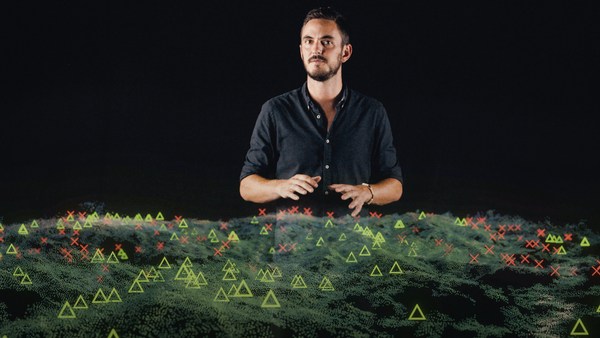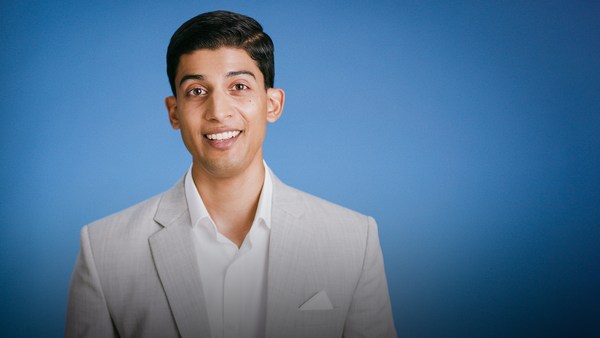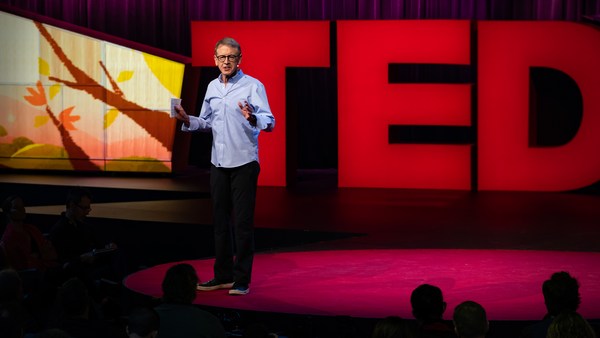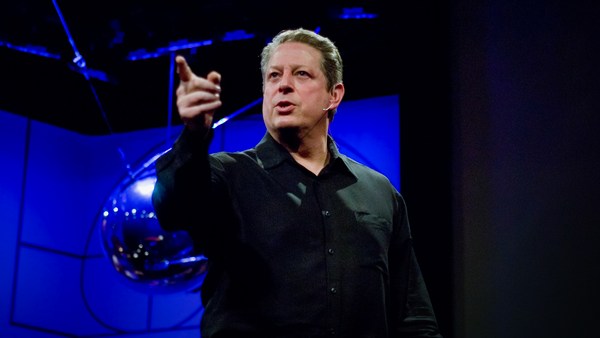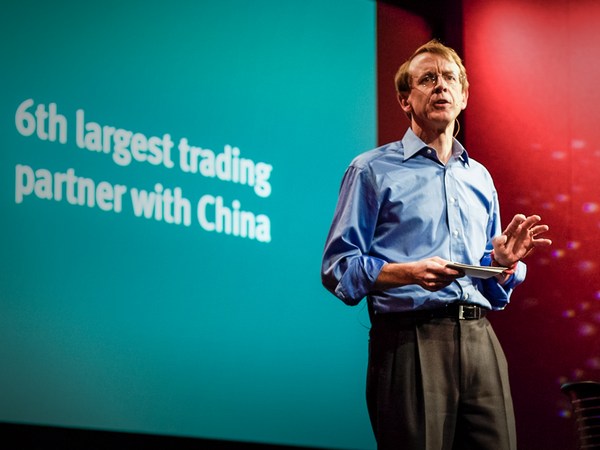John Doerr: Hello, Hal!
Hal Harvey: John, nice to see you.
JD: Nice to see you too.
HH: So John, we've got a big challenge. We need to get carbon out of the atmosphere. We need to stop emitting carbon, drive it to zero by 2050. And we need to be halfway there by 2030. Where are we now?
JD: As you know, we're dumping 55 billion tons of carbon pollution in our precious atmosphere every year, as if it's some kind of free and open sewer. To get halfway to zero by 2030, we're going to have to reduce annual emissions by about 10 percent a year. And we've never reduced annual emissions in any year in the history of the planet. So let's break this down. Seventy-five percent of the emissions come from the 20 largest emitting countries. And from four sectors of their economy. The first is grid. Second, transportation. The third from the buildings. And the fourth from industrial activities. We've got to fix all those, at speed and at scale.
HH: We do. And matters are in some ways worse than we think and some ways better. Let me start with the worse. Climate change is a wicked problem. And what do I mean by wicked problem? It means it's a problem that transcends geographic boundaries. The sources are everywhere, and the impacts are everywhere. Although obviously some nations have contributed much more than others. In fact, one of the terrible things about climate change is those who contributed least to it will be hurt the most. It's a great inequity machine. So here we have a problem that you cannot solve within the national boundaries of one country, and yet international institutions are notoriously weak. So that's part of the wicked problem. The second element of the wicked problem is it transcends normal timescales. We're used to news day by day, or quarterly reports for business enterprises, or an election cycle -- that's about the longest we think anymore of. Climate change essentially lasts forever. When you put carbon dioxide into the atmosphere, it's there, or its impacts are there, for 1,000 years. It's a gift we keep on giving for our children, our grandchildren and dozens and dozens of generations beyond there.
JD: It sounds like a tax we keep on paying.
HH: Yeah, it is. It is. You sin once, you pay forever. And then the third element of it being a wicked problem is that carbon dioxide is embedded in every aspect of our industrial economy. Every car, and every truck, and every airplane, and every house, and every electrical socket, and every industrial processes now emits carbon dioxide.
JD: So what's the recipe?
HH: Well, here's the shortcut. If you decarbonize the grid, the electrical grid, and then run everything on electricity -- decarbonize the grid and electrify everything -- if you do those two things, you have a zero carbon economy. Now, that would seem like a pipe dream just a few years ago because it was expensive to create a zero-carbon grid. But the prices of solar and wind have plummeted. Solar's now the cheapest form of electricity on planet earth and wind is second. It means now that you can convert the grid to zero-carbon rapidly and save consumers money along the way. So there's leverage.
JD: Well, I think a key question, Hal, is do we have the technology that we need to replace fossil fuels to get this job done? And my answer is no. I think we're about 70, maybe 80 percent of the way there. For example, we urgently need a breakthrough in batteries. Our batteries need to be higher energy density. They need to have enhanced safety, faster charging. They need to take less space and less weight, and above all else, they need to cost a lot less. In fact, we need new chemistries that don't rely on scarce cobalt. And we're going to need lots of these batteries. We desperately need much more research in clean energy technology. The US invests about 2.5 billion dollars a year. Do you know how much Americans spend on potato chips?
HH: No.
JD: The answer is 4 billion dollars. Now, what do you think of that?
HH: Upside down. But let me press a little further on a question that's fascinated me about the Silicon Valley. So the Silicon Valley is governed by Moore's law, where performance doubles every 18 months. It's not really a law, it's an observation, but be that as it may. The energy world is governed by much more mundane laws, the laws of thermodynamics, right? It's physical stuff in the economy. Cement, trucks, factories, power plants.
JD: Atoms, not bits.
HH: Atoms, not bits. Perfect. And the transformation of big physical things is slower, and the margins are worse, and often the commodities are generic. How do we stimulate the kind of innovation in those worlds that we actually need in order to save this planet earth?
JD: Well, that's a really great question. The innovation starts with basic science in research and development. And the American commitment to that, while advanced on a global sense, is still paltry. It needs to be 10 times higher than the, say, 2.5 billion per year that we spend on clean energy R and D. But we need to go beyond R and D as well. There needs to be a kind of development, a kind of pre-commercialization, which in the US is done by a group called ARPA-E. Then there's the matter of forming new companies.
HH: Yes.
JD: And I think entrepreneurial energy is shifting back into that field. It's clear that it takes longer and more capital, but you can build a really substantial and valuable enterprise or company.
HH: Yes.
JD: Tesla's a prime example. Beyond Meat is another one. And that's inspiring entrepreneurs globally. But that's not enough. I think you need also a demand signal, in the form of policies and purchases, from nations, like Germany did with solar, to go make these markets happen. And so I'm, at heart, a capitalist. I think this energy crisis is the mother of all markets. And it will take longer. But the market for electric vehicle batteries -- 500 billion dollars a year. It's probably another 500 billion dollars if you go to stationary batteries. I want to tell you another story that involves policy, but importantly, plans. Now, Shenzhen is a city of 15 million people, an innovative city, in China. And they decided that they were going to move to electric buses. And so they required all buses be electric. In fact, they required parking spots have chargers associated with them. So today, Shenzhen has 18,000 electric buses. It has 21,000 electric taxis. And this goodness didn't just happen. It was the result of a thoughtful, written, five-year plan that isn't just a kind of campaign promise. Executing against these plans is how mayors get promoted, or fired. And so it's really deadly serious. It has to do with carbon, and it has to do with health, with jobs, and with overall economic strength. The bottom line is that China today has 420,000 electric buses. America has less than 1,000. So what other national projects are there that you'd like to see?
HH: So this is a global effort, but not everybody's going to do the same thing, or should do the same thing. Let me start with Norway. A country that happens to be brilliant at offshore oil, but also understands the consequences of burning more oil. They realized they could deploy their skills from their offshore oil development into offshore wind. It's a big deal to put wind turbines out in the ocean. The ocean, the winds are much stronger, and the winds are much more constant, not only stronger. So it balances the grid beautifully. But it's really hard to build things in the deep ocean. Norway's good at it. So let them take that on.
JD: Are they taking it on?
HH: They are actually. Yeah. It's pretty brilliant. Another example: India. There are hundreds of millions of people in India that don’t have access to electricity. With the advances in solar and advances in batteries, there's no reason they have to build the grid to all those villages that don't have a grid. Skip the steps. Skip the dirty steps. Leapfrog to clean. But this all comes together, in my opinion, in the realm of policy. We need dramatic accelerants, is what you're saying. Accelerants in R and D, but also accelerants in deployment. Deployment is innovation because deployment drives prices down. The right policy can turn things around, and we've seen it happen already in the electricity sector. So electricity regulators have asked for ever cleaner sources of electricity: more renewables, less coal, less natural gas. And it's working. It's working pretty brilliantly, actually. But it's not enough. So the German government recognized the possibility of driving down the price of clean energy. And so they put in orders on the books. They agreed to pay an extra price for early phases of solar energy, presuming the price would drop. They created the demand signal using policy. The Chinese created a supply signal, also using policy. They decided that solar was a strategic part of their future economy. So you had this unwritten agreement between the two countries, one buying a lot, the other producing a lot, that helped drive the price down 80 percent. We should be doing that with 10 technologies, or a dozen, around the world. We need policy as the magic sauce to go through those four sectors in the biggest countries, in all countries. And one of the things that animates me is that this requires people who are concerned about climate change, which should be everybody, those folks have to apply their energies on the policies that matter with the decision-makers who matter. If you don't know who the decision-maker is to decarbonize the grid, or to produce electric vehicles in the policy world, you're really not in the game.
JD: Hal, you're an expert in policy. I know this because I've read your book --
HH: Thanks, John.
JD: Designing Climate Solutions. What makes for good policy?
HH: There are some secrets here, and they're really important if we want to solve climate change. Let me give you two of the secrets. First, you have to go where the tons are.
JD: Follow the tons.
HH: Follow the tons. And this is such an obvious idea, but it's amazing how many policies tinker around the edges. I call it green paint. We don't need green paint. We need green substance. The second thing is when you set a policy, insist on continuous improvement. So what does that mean? Back in 1978, Jerry Brown was the youngest governor in California's history, and he implemented a thermal building code, which means when you build a building, it has to have insulation in it. Pretty simple idea. But he put a trick into that law. He said every three years, the code gets tighter, and tighter, and tighter. And how do you know how much tighter? Anything that pays for itself in energy savings gets thrown into the code. So in the intervening years, we got better insulation, better windows, better furnaces, better roofing. Today, a new California building uses 80 percent less energy than a pre-code building. And Jerry Brown used his legislative bandwidth once to draft that policy that produces fruits forever.
JD: He got the words right.
HH: He got the words right. Continuous improvement. There's a counterexample, which should be instructive as well. So you and I are both of an age where we remember the first oil embargo and the energy crisis that caused with stagnation and inflation at the same time. Gerald Ford was president. And he realized that if we could double the fuel efficiency of new vehicles, we could cut in half their energy use. So he signed a law to double the fuel efficiency of new vehicles sold in America, from 13 miles per gallon, absolutely pathetic, to 26 miles per gallon.
JD: That's big.
HH: It’s pathetic by today’s standards, but it was a big deal then, right? It was doubling. But by setting a number as the goal, we created a 25-year plateau. So imagine if instead he said fuel efficiency will increase at four percent a year forever.
JD: So Hal, goals are great things. How do you find the policymakers that set these goals? And then how do you influence them?
HH: Well, so that's maybe the most important question of all. If we have a lot of concern about climate change, and not it's properly aimed, it just dissipates. It's a one-day headline about a march. And that's not going to get the job done. In every sector, in every country, there’s a decision-maker. And it’s usually not the senator or the president. It’s usually an air quality regulator or a public utilities commissioner. These are the people that have the secret knobs on the energy of the economy. They're the ones that get to decide whether we get cleaner and cleaner energy, more and more efficient buildings, more and more efficient cars, and so forth.
JD: How many of these people are there in an economy like the US?
HH: Electric utilities are monopolies, and so they're regulated by utilities commissions. Otherwise they'd jack up the price too high. Every state has a utilities commission, a public utilities commission. These commissions typically have five members. So that’s about 250 people in America who control the future of our grid. None of them's a senator. None of them's a governor. They're appointed positions.
JD: How much carbon do they control?
HH: 40 percent of the carbon in the economy.
JD: Wow. 250 people.
HH: 250 individuals. Now, you can narrow that down even more. So let's go for the 30 biggest states. Because this is all about tons, right?
JD: Yeah.
HH: You're now down to 150 individuals. And if you're content to win votes on a three to two basis, you're down to 90 individuals who control almost half the carbon in the economy. How do you make sure those 90 people vote for a clean energy grid? They have a quasi-judicial process. They hold hearings. They take evidence. They consider what they're allowed to do within their statutory framework. And then they make a decision. They have to look at human health, at economics, at reliability. And they have to look at greenhouse gases.
JD: Is there a breakthrough you’d like to see or an innovation you’re particularly excited about?
HH: I'm keen on green hydrogen. I mean, we need to drive down the cost of electrolysis, and it's always going to be more expensive than just pure electricity. That's a thermodynamic certainty. But once you have hydrogen, you can reform it with other chemicals into liquid fuels, like synthetic diesel for airplanes or long haul trucks or ships. You can use it to make fertilizers. And we can rethink the basics of chemistry. Chemistry's built on hydrocarbons, and we need to build it on carbohydrates instead. So different kinds of molecules, but it’s not impossible. I guess the other thing that’s fascinating to me is this term "stranded investment." So if you own a coal-fired power plant or a coal mine today, anywhere in the world almost, you have stranded your money. You can't get it back. Because they're uneconomic. We analyzed every coal plant in America, the economics of every one, and 75 percent of them, it's cheaper to shut them down and replace them with a brand new wind or solar farm than just pay the operating costs of that coal plant. So what's going to get stranded next? This is an important question. I think natural gas is next. It's already skidding along at low prices. I think people who are putting a lot of money into gas fields right now, or gas turbines right now, are going to rue the day. John, what are some of the innovations or breakthroughs that you’re especially excited about?
JD: Well, one exciting development comes from my friend and hero Al Gore, who has the vision and is working with entrepreneurs, that by integrating data can produce, for every place on the planet, a new real-time estimate of what their carbon emissions are. You know, I come from the school of measuring what matters.
HH: Yes you do.
JD: If we had a real-time kind of Google Earth, where we could zoom in to individual factories, or oil fields, or Walmart stores, I think that could really change the game. I'm also a believer in carbon accounting. And so I've seen entrepreneurs who are making systems that will allow not just the owners but all the employees of an enterprise or organization to see what's in their carbon supply chain.
HH: Yup. Yup.
JD: I'd love to see legislation that required the OMB score every piece of legislation for its carbon impact.
HH: Yes.
JD: If we're serious about this, we're going to measure what matters, measure what really matters.
HH: Yup. Yup.
JD: So let's talk about Paris and the Paris Accord because some people say that some nations are ahead of their plans, but others are not, and that the agenda is not aggressive enough. It’s not going to get us where we need to go. What is your view of the Paris Accords?
HH: The Paris Accords are quite interesting animals. It’s not a national commitment and it’s not an international commitment.
JD: They're not binding.
HH: They're not binding. They're individually determined national contributions. That’s the term of art that they use in the Paris Accord.
JD: So what does that mean?
HH: So that means Europe says: We're going to do 40 percent less carbon in 2030 than we did in 1990, for example. If they fail to hit that number, there’s no consequences. If they go past that number, there’s no consequences. That, however, does that mean the Paris Accords are not important. They're really important. Because they set up, I would call it, a race to the top instead of a race to the bottom. They set up a dynamic where people were sort of bidding to do better and better. They created transparency in how people are doing in terms of their carbon emissions. And there are some countries that take these commitments very seriously, and including the European Union and China on that list.
JD: So I'm going to push on this, and what we really need
HH: Yup.
is we need a plan.
HH: So elaborate.
JD: Well, I think what we have today are goals, not a plan. And I think a plan would be a set of 20 focused precision policy efforts, each of whom's targeted at the right decision-maker or makers, in the right venues, for these 20 largest nations, in the four sectors of their economy. And these precision campaigns would be well-funded, they'd be well-focused, they'd have an awesome founder/CEO/leader, an amazing staff of people, an accountable set of objectives and key results, and be on a timeline. We would measure their progress, quarter by quarter. That would give me hope that we'll get where we need to go by 2030. How about you?
HH: Let me add on a couple of characteristics to exactly what you just said. And that is you need to have a deep understanding of who the decision-maker is, ideally by person, certainly by position, and understand exactly what motivates them or hinders them in making this decision so that you can put all your forces on the decision-maker at point of decision. It's one thing to have a general concern about the environment or about climate. It's quite another to focus that concern on the most important decisions on the planet. And that's what we need to do. I love this idea.
JD: Okay, so focus on the decision-makers. I think there's other individual action that we can and must take. We've got to amplify your voice so that you organize, activate, proselytize, your company, your neighbors, youth, I think are an incredibly powerful voice, and friends.
HH: Yup.
JD: You need to vote.
HH: Yup.
JD: You need to vote like your life depends on it. So Hal, what does this all add up to? What's the takeaway?
HH: I'm an optimist, John. I've seen this possible. I've seen when nations decide to do great things, they can do great things. Think of America’s rural electrification or the interstate highway system we built. Those are huge projects that transformed the country. What we did prepping for World War II: we built 300,000 airplanes in four years. So if we decide to do something, or when the Germans or the Chinese or the Indians decide to do something, other countries, they can get it done. But if this is sort of piffling around the edges, we won't get there. What do you think? Are you optimistic?
JD: My take on this is, I may not be optimistic, but I'm hopeful. I really think the crucial question is: Can we do what we must, at speed and at scale? The good news is, it's now clearly cheaper to save the planet than to ruin it. The bad news is, we are fast running out of time.
